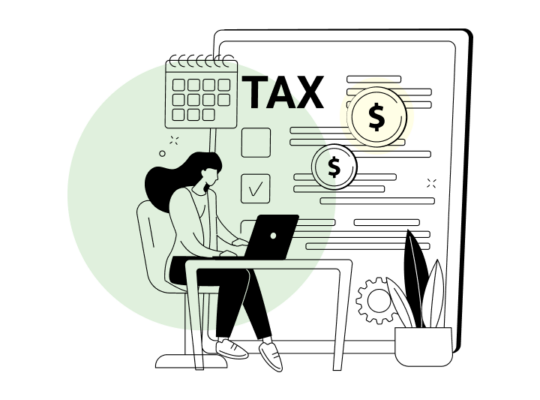Get all the expert help you need for only $20 when you’re 25 or younger with TurboTax
8 Tax Benefits for Low Income Canadians in 2025
TurboTax Canada
February 12, 2025 | 6 Min Read
Updated for tax year 2025

Key Takeaways
-
There are various federal and provincial tax credits and benefits available specifically for low-income tax filers in Canada, but you must file your tax return to take advantage of them.
-
The Canada Workers Benefit, GST/HST sales tax credit, Canada Training Credit, various credits for seniors, and more may be claimed if you fall below a certain income level.
-
TurboTax automatically searches 400+ credits and deductions so you can maximize your tax savings for all credits and benefits that apply to you.
What is considered low income in Canada?
The definition of low income can mean something different depending on who you ask and the types of benefits you apply for.
This is because researchers and policymakers in Canada use different measuring tools to decide who needs assistance. Income cutoffs can differ for each program, benefit, or credit.
In other words, the amount of money you make influences the types of benefits and credits you’re eligible for. If you fall below certain income levels, you may qualify for some of these credits and benefits.
1. Canada Workers Benefit
The Canada Workers Benefit (CWB) is a refundable tax credit designed to help low-income working individuals and families with their financial needs. Eligible taxpayers can receive up to $1,633 (for single individuals) or $2,813 (per family) depending on income level for 2025. The CWB has provided advance payments equal to 50% of the CWB across 3 payments under the Advanced Canada Workers Benefit (ACWB).
You can apply for the CWB when you complete and file your tax return.
2. Goods and Services Tax/Harmonized Sales Tax (GST/HST) credit
This credit helps lower-income Canadians offset all or part of the federal Goods and Services Tax/Harmonized Sales Tax (GST/HST) that they pay when purchasing products and services.
The credit ranges from depending on your net income and family situation. For 2025 the amounts are:
- $533 if you are single
- $698 if you are married or have a common-law partner
- $184 for each child under 19 years of age
Once you reach a certain income, you’ll no longer receive this credit.
You can apply for the GST/HST credit by filing your tax return. Or, if you'd like to apply sooner, use Form RC151.
3. Canada Child Benefit
The Canada Child Benefit (CCB) is a tax-free monthly payment made to eligible individuals and families with children under the age of 18. Eligible recipients may get up to $7,997 per child for 2025. The amount you’re eligible to receive depends on your family’s income and size. To continue with the monthly payments, you must file your tax return on time each year. You need to be a Canadian resident to qualify and must complete Form RC66—Canada Child Benefits Application to apply.
If you have a child with a qualifying disability who is approved for the disability tax credit certificate, they will receive $3,411.
4. Refundable provincial credits
In addition to the available federal tax credits and benefits, many provinces and territories have separate benefits and credits. For example:
Ontario Trillium Benefit
The Ontario Trillium Benefit is one of Ontario’s tax benefits. It provides a tax credit depending on your income and family status. To get an estimate of your entitlement, use the child and family benefits calculator.
Quebec credits
If you live in Quebec, here are 2 tax credits to consider:
-
Quebec Family Allowance. Similar to the CCB, the Quebec Family Allowance is a tax-free monthly payment provided to families living in Quebec with children under 18 years old. The credit amount for 2025 is between $1,196 and $3,006 for each child. You must file your tax return and complete the provincial forms to apply for this credit.
-
Solidarity Tax Credit. The Solidarity Tax Credit is a refundable tax credit for low- and moderate-income individuals in Quebec. The amount of the credit depends on income and marital status.
5. Basic Personal Amount
Both federal and provincial governments offer a Basic Personal Amount (BPA) for all taxpayers to claim on their tax returns. This non-refundable tax credit lets you reduce the taxes you owe federally and provincially. For the 2024 tax year, the federal amount is $16,129, while the BPA for Quebec is $18,571.
The provincial amount of this tax credit varies by province.
6. Tuition tax credits
If you’re a student, you can apply for tuition tax credits and the Canada Training Credit when you file your tax return. The non-refundable tuition tax credit is a percentage of your total costs, including tuition and eligible fees. That percentage is equal to the tax rate for the lowest federal tax bracket, which in 2025 is 14.5%.
If you attended a recognized educational institution, you can claim these amounts on your tax return. You should have received a Form T2202 from the school you’re attending. This form contains everything you need to include to claim tuition credits on your tax return.
Tuition tax credits can be carried forward to a future taxation year or up to $5,000 can be transferred to a spouse/common-law partner or eligible family members. Tuition amounts can also be transferred to a parent.
7. The Canada Training Credit
The Canada Training Credit (CTC) is a refundable tax credit that accumulates as students complete their post-secondary education.
If you’re a student between 25 to 65 and have eligible tuition expenses, you may be able to claim the CTC on your tax return, as long as your CTC limit on your Notice of Assessment (NOA) is higher than zero.
8. Tax credits for senior citizens
There are several tax credits available for low-income seniors:
-
The Home Accessibility Tax Credit (HATC). This is a non-refundable tax credit for seniors. This credit helps cover the costs of renovations or home modifications to improve mobility and independence. Use TurboTax to automatically claim the HATC on line 31285 of your tax return. You must be 65 or older or be entitled to the Disability Tax Credit.
-
The Age Amount Tax Credit. If you’re 65 years old or older and have a net income of less than $105,709 for 2025, you can claim the age amount tax credit. For those with a net income of less than $45,522, you can claim up to $9,028. This amount is automatically calculated according to your date of birth when you use TurboTax.
-
Quebec Independent Living Tax Credit. This is a refundable credit for seniors 70 and older living in Quebec who have incurred expenses to continue living independently. If you spent at least $250 on personal safety monitoring, accessibility in your home, or even spent time in a rehabilitation centre, you may be able to deduct these expenses to receive a 20% credit on the portion that exceeds $250.
-
Split pension amount. Qualifying seniors can split their pension amounts to save income tax. Seniors can transfer up to half their eligible pension income to their spouse or common-law partner. This will reduce their overall taxable income and the amount of taxes they have to pay. With TurboTax, it’s easy to calculate the amount to split for the most tax benefit.
Benefits wayfinder: The easy way to find government benefits
There’s a lot to keep track of when it comes to doing your taxes but you might be leaving money on the table if you don’t file your taxes annually and ensure you’re getting all the benefits you’re eligible for.
To make it easier, national charity Prosper Canada created Benefits Wayfinder, a resource to help you understand and maximize the government benefits you’re entitled to. The link to the tool is integrated into TurboTax for those who are eligible for certain benefits, so you can find out about applicable benefits while you’re doing your taxes and make sure you’re not missing out on the funds that you qualify for.
The last word
Whether you’re a student or between jobs, making ends meet can be a real challenge. It doesn’t help that the cost of living has skyrocketed, thanks to inflation.
Filing your taxes can help you access essential benefits, credits, and deductions, giving you more financial flexibility.
File with confidence
Get advice and answers as you go, with a final tax expert review before you file.
Get StartedRelated articles

© 1997-2024 Intuit, Inc. All rights reserved. Intuit, QuickBooks, QB, TurboTax, Profile, and Mint are registered trademarks of Intuit Inc. Terms and conditions, features, support, pricing, and service options subject to change without notice.
Copyright © Intuit Canada ULC, 2024. All rights reserved.
The views expressed on this site are intended to provide generalized financial information designed to educate a broad segment of the public; it does not give personalized tax, investment, legal, or other business and professional advice. Before taking any action, you should always seek the assistance of a professional who knows your particular situation for advice on taxes, your investments, the law, or any other business and professional matters that affect you and/or your business.









